Michael Sturtz
| Michael Sturtz | |
|---|---|
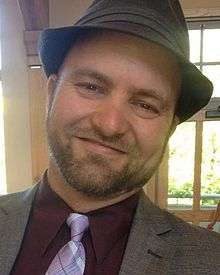 | |
| Born |
1969 Walnut Creek, California |
| Nationality | American |
| Occupation | Sculptor, teacher, designer, and facilitator of creative thinking. Founder of The Crucible. |
| Years active | 1991 to present |
| Organization | The Crucible, Institute of Design at Stanford, Die Moto |
| Website | http://michaelsturtz.com/ |
Michael Sturtz (born May 17, 1969 in Walnut Creek, CA) is a sculptor, teacher, designer and facilitator of creative thinking. He is the founder of The Crucible, a nonprofit industrial arts school in Oakland, California, United States.
Sturtz's work often combines organic themes with metal and machinery. Sturtz states that his artwork "showcases a strong juxtaposition between materials including metals and glass, stone and kinetics, fire and liquid, 3D objects and video."[1] His sculptural works are exhibited extensively in collections throughout the US, Italy and England.
Early life and education
Sturtz grew up tinkering with machines and from a very young age could be found rebuilding cars in his stepfather's auto body shop, where he developed an affinity for metal and machinery. Always fascinated with the elegance and intricacies of how things worked, he would spend hot summer afternoons dissecting road kill and later observe his father, an orthopedic surgeon, in the operating room. As a result, he developed a fascination for the hidden mechanics of everyday forms.
Sturtz received his Bachelor of Fine Arts from the Alfred University School of Art and Design and his Master of Fine Arts from The School of the Art Institute of Chicago. He also studied stone carving at the studio of Sem Ghelardini, in Pietrasanta, Italy.
The Crucible
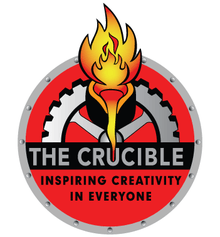
In 1999, Sturtz founded The Crucible, a non-profit regional art center in Oakland, CA, where industrial arts are taught in a creative and non-competitive learning environment. Sturtz's goal was to break down barriers to the arts by creating an art school that emphasized non-competitive learning and participation.[2]
During his 12 years as Executive Director, Sturtz nurtured what began as an idea and a $1,750 seed grant into the largest nonprofit industrial arts educational facility in the nation. Sturtz designed The Crucible's facilities and programs, and then led a staff and faculty of 100+ in the build-out of a 56,000 square foot industrial arts facility where over 8,000 students would attend every year. The Crucible welcomes 20,000 visitors per year to participate in adult art education, youth programs, community outreach, corporate workshops, and open house events.
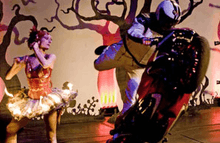
During his tenure as The Crucible’s Executive Director, Sturtz developed a reputation for innovative projects. He produced and directed large-scale theatrical events and festivals which melded the classical and industrial arts, in The Crucible’s Fire Operas, Fire Ballets and Fire Arts Festivals.
Stanford
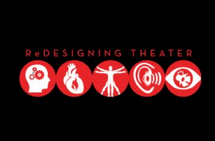

Sturtz retired from The Crucible on January 15, 2011 to join Stanford University, accepting a teaching appointment in the Mechanical Engineering Design Group. He has been teaching at The Stanford School of Design, where he spearheaded and then directed the reDesigning Theater project for two years, a creative program focusing on cutting edge live performance appealing to the 21 to 35-year-old demographic.
Sturtz is currently the Executive Director of The Stanford Creative Ignition Lab @ Autodesk. This new lab is exploring the potential for visual, experiential, and embodied thinking to advance the future of learning, design, and making. The program aims to pioneer new ways to more purposefully bring the tools of invention and production seamlessly into creative processes.[3]
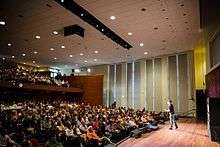
TEDx Stanford is an independently organized event by Stanford University in the spirit of ideas worth spreading, that brings scholars, explorers and artists together. Sturtz participated in the day-long conference program “Above and Beyond“, to speak about finding your creative voice and harnessing your creativity.[4]
World land speed record for biodiesel motorcycle
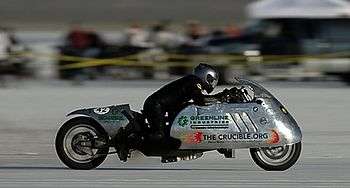
Die Moto is the world’s first biodiesel land speed motorcycle. It was built in 2006 by Sturtz and The Diesel Dozen, a team of artists, builders, engineers and gearheads who shared the common goal of constructing a biodiesel bike that could beat the existing diesel motorcycle world land speed record of 105 mph. Die Moto combines a BWM chassis with a car engine and a hand-tooled retro fairing. Sturtz and the team worked for nearly one year, overcoming engineering challenges and garnering sponsorships and media interest.
On September 3, 2007 Sturtz piloted the custom-built biodiesel motorcycle Die-Moto at the Bonneville Salt Flats, setting the world land speed record at 130.614 MPH, using 100% biodiesel.[5] The event was the first non-petroleum powered motorcycle to ever run at Bonneville, and set the world record running on Greenline Industries B100 Bio-Diesel fuel.
The world land speed record remains unbroken.
References
- ↑ Michael, Sturtz. "Bio quote". Retrieved 15 January 2014.
- ↑ Chun, Kimberly (March 12, 1999). "Founders Cast the Crucible as a Melting Pot for East Bay Artists". San Francisco Chronicle. Retrieved 2 April 2014.
- ↑ "The Stanford Creative Ignition Lab @ Autodesk". The CI Lab @ Autodesk. Retrieved 1 August 2015.
- ↑ "TEDx Stanford". TEDx Stanford - Above and Beyond. Retrieved 10 June 2014.
- ↑ "Die-Moto". Retrieved 2 April 2014.